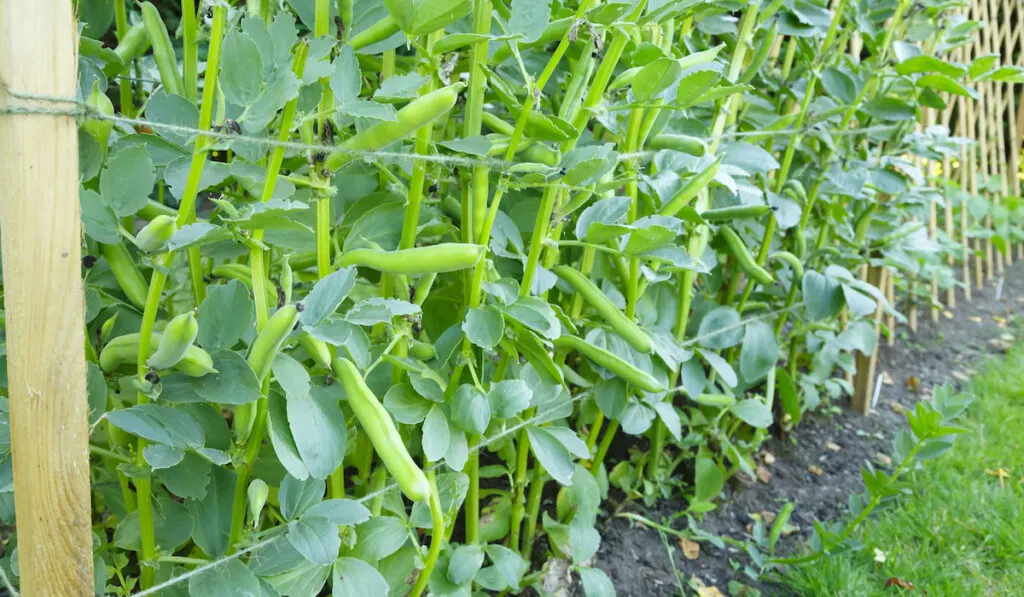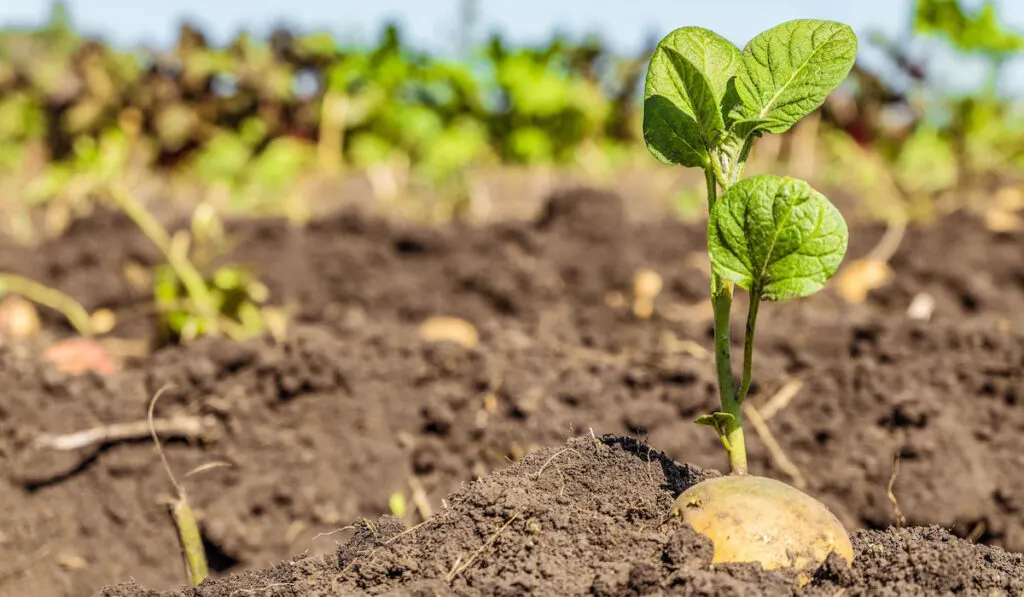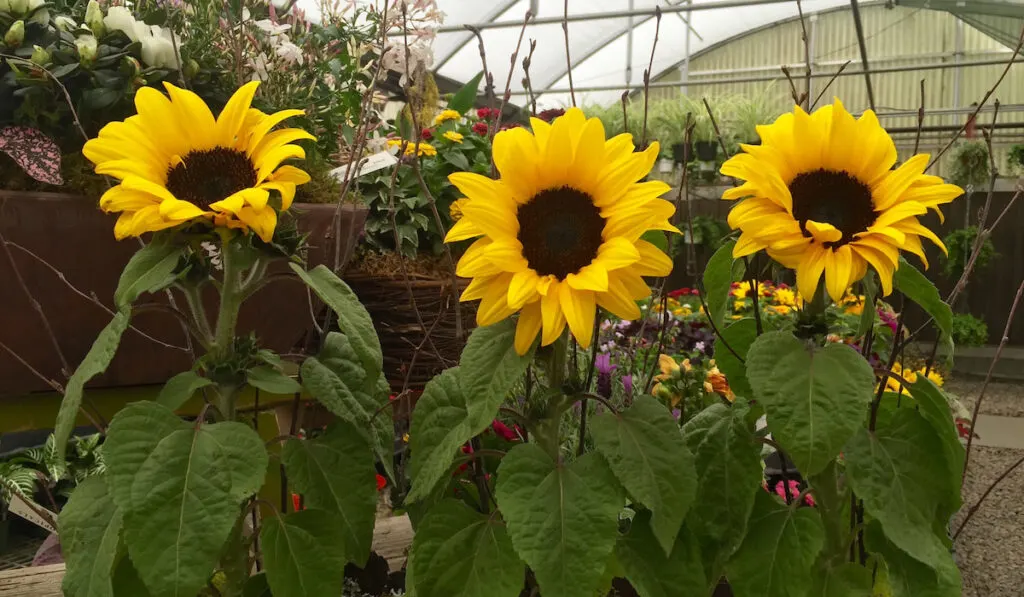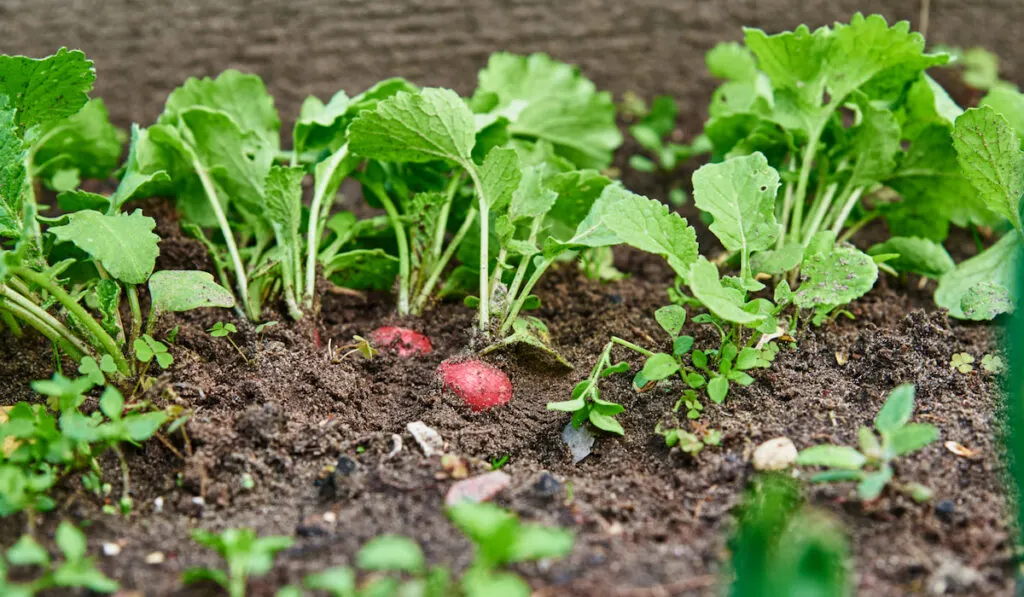Farming is a way of life and set of activities that put food and other rich products on your table. Even if you only have a little space in your yard, there are crops you can grow.
Farms with large acreage have different options than small backyard farms and can grow crops with different goals in mind.
Here are nineteen popular crops that can be grown on large or small properties:
Table of Contents
1. Tomatoes

Tomatoes are indeed a popular crop. Tomato plants are grown for their fruits, which are used all over the world as a main ingredient in many cultural recipes. The colorful fruits are a staple in many countries so growing tomatoes is never a bad idea.
However, note that tomato plants are picky and heavy feeders when it comes to their growth requirements.
The soil must be loose and rich in organic matter, and you need to wait until the soil is dry at the surface before you water the plants. Also, ensure that you amend the soil regularly with nutrients and fertilizers.
2. Peppers

Just like tomatoes, peppers are planted worldwide, and there are many pepper varieties to choose from. Peppers do not just enrich and sweeten foods; they often give the food a spicy taste.
Planting peppers so you don’t always have to go to a store whenever you need them is a great idea. Peppers are also easy to grow.
Peppers can tolerate a wide range of soils but require a steady source of nutrients while they are growing.
3. Peas

Peas are leguminous plants that people grow for many reasons worldwide. People grow peas for their seeds, flowers, and soil amendment properties.
Peas help to amend the soil by introducing nitrogen-fixing bacteria into the soil.
Growing peas is easy. You just need to make sure that the soil is not water-logged. Also, you do not need expensive nitrogen-rich fertilizers for peas.
4. Cabbage

Cabbages are among the most popular vegetables in the world. The leaves of cabbage can be eaten raw or cooked.
Cabbages are easy to grow. They need loose, organic soil and ensure that you feed them with nitrogen-rich fertilizer so that they produce large, tasty leaves.
5. Beets

Beets are sweet crops in the family Amaranthaceae. People cultivate beets worldwide for their leaves and roots.
Their roots are actually tubers, which function as the storage spaces for the plant’s nutrients. For this reason, beets are a reliable source of carbohydrates.
The leaves are packed with vitamins and minerals and are also consumed like lettuce or chard.
Grow beets in consistently moist soil (not damp) and ensure that they have at least six hours of daily light.
6. Chards

Swiss chards are grown for their sweet leaves and stalks. The leaves are dark-green, and the stalks can be yellow, green, white, or red, according to the variety. The vegetables are either used to make a salad or sweet soups.
They are very easy to grow and propagate. You only need to plant the stalks in a nutrient-rich substrate to get the roots to grow.
Swiss chards need nitrogen-rich fertilizer and are cold-weather tolerant; chards will continue to grow into the late fall in northern latitudes, making them a garden-extending crop.
7. Strawberries

Who does not love strawberries? These versatile plants produce sweet fruits that people all over the world eat. Strawberries are easy to grow as long as you pay attention to their nutrient needs and mulch.
In their vegetative phase, they need nitrogen. However, they need more phosphorus when fruiting. Ensure that you mulch them so that their fruits do not rest on the bare ground.
8. Wheat

Wheat is a staple grain all over the world. Wheat plants produce grains that are ground to make flour. This flour is used to make breads, cakes, and other baked foods.
Wheat straw is used as fodder for animals. As you can see, wheat is an essential crop and no part of the plant need be wasted.
9. Peanuts

Peanut plants produce sweet, edible seeds that people either eat raw or cook to improve their flavor. Peanut plants are legumes, so you can make use of them to introduce nitrogen into the soil.
You can also make use of the peanut plant leaves and stems to feed animals. As you can see, peanut plants are super useful plants.
They are easy to grow and can thrive in a wide range of soils. Just make sure that the soil is not waterlogged.
10. Fava beans

Fava beans produce seeds, leaves that animals eat, and roots that introduce nitrogen-fixing bacteria into the soil. One extra use of fava beans is planting them as a cover crop as it is a cool-season crop. As you can see, every part of the fava bean plant is useful.
You can plant as many fava beans on your farm as you want. If you want to use them as cover crops, mix them into the soil immediately after they start to flower.
11. Potatoes

Potatoes are root vegetables that people grow all over the world, especially in the United States. This much-loved tuber has won many awards and is super easy to grow. You can even grow potatoes in sack bags.
It does not matter what you want to grow your potatoes with, you need to ensure that the soil is not compacted. Also, feed your potatoes with a balanced fertilizer to produce many leaves and tubers (more leaves mean more tubers).
12. Maize (Corn)

Maize, or corn, is a staple grain that people eat or use to make other foods. Corn can be very sweet, especially when cooked and eaten on the cob. Some varieties are starchy and are best used for the basis of other culinary dishes.
Maize is a grain plant just like wheat, so you can make use of the stalks to feed your farm animals.
Note that corn plants require nitrogen-rich soil to grow. Farmers usually rotate maize with leguminous crops such as alfalfa or soybeans, to replenish the nitrogen in the soil every few years.
13. Sunflowers

Sunflower plants are some of the most popular plants with both ornamental and edible uses. Sunflowers are beautiful to see, but people mostly grow them because of their edible seeds. You can also make sunflower oil from the seeds.
Sunflowers are not picky growers; you only need to make sure that the soil is well-drained and nitrogen-rich. If possible, amend the soil with compost.
14. Cucumbers

Cucumbers are one of the most popular fruits on earth. Cucumbers are edible fruits filled with high water content. You can eat cucumbers raw or use them in different types of foods. Also, you can ferment cucumbers to make pickles.
Cucumber plants are easy to grow.
If you want to grow cucumbers, ensure that you have both sexes so that they can produce fruits after flowering.
15. Eggplants

Eggplants are plants in the family Solanaceae just like tomatoes. They produce larger fruits that you can use to make different foods. You can even eat them raw if you want.
Eggplants are easy to grow. Just make sure that you enrich their soil with organic nutrients so that the soil is never nutrient-depleted.
16. Cowpea

Cowpea is a warm-season crop grown worldwide, especially in African countries, for its sweet seeds that are cooked to make different foods.
If you have a greenhouse, you can grow cowpeas so that you can taste the sweetness of their seeds. Cowpea enriches the soil with nitrogen and makes a great fodder crop for cows.
17. Radishes

Radishes are grown for their tubers and leaves. Radish leaves are best consumed when they are young. However, it would help if you waited until the plants were mature before you harvest their roots.
18. Pineapples

Pineapples are a favorite fruit of many. Pineapple plants can make a great addition to your ornamental garden because they are beautiful and easy to grow.
However, they need a lot of attention as you must constantly remove dead leaves and debris under the healthy leaves. They can also take years to mature enough to produce fruit.
19. Barley

Barley is a popular plant usually grown as fodder for animals. Farmers usually grow barley in hydroponic systems to feed the young shoots to their animals. If you wait until they are matured enough, barley plants produce sweet, protein-rich seeds that are used to make flour or in soups or other dishes.
Which plant would you like to grow?
What You Should Consider When Selecting a Crop to Grow
Before selecting the crop that you should grow, consider the following:
1. Size of Your Garden
The size of your garden matters because different plants have specific spacing requirements. If your plants are too compacted, they may not grow so well. For example, tomatoes need more space than fava beans. You must measure the length and width of your garden.
You should also check the spacing requirement of your crop before you start sowing the seeds.
Note that even though you know the exact number of plants your garden can grow, you should sow more seeds to get enough plants. If you get more plants than you need, remove the extras and ensure that there is space between each plant.

2. Season of the Year
The season matters a lot because plants grow and thrive in specific conditions. This means that unless it is the right season for a plant, you should not grow that plant. Here are seasons and plants that you can grow easily in them:
- Spring and Summer: Spring and summer are more like the universal farming seasons because almost every plant with agricultural importance grows in these seasons. You can grow tomatoes, pepper, cucumber, maize, potatoes, and many plants in spring and summer.
- Fall and Winter: These cooler seasons are usually the resting seasons for farmers. Plants such as fava beans and some grains can grow in these seasons as cover crops.
Do not grow warm season crops in cool seasons and vice versa.
3. Crop Growth Requirements

Consider the growth requirements of a plant and check if you can give it everything it needs. If you cannot, try growing something else. Here are some standard requirements of plants:
- Temperature: You must check a plant’s temperature requirements because if you cannot grow it in its required temperature range, it will not grow well or produce flowers and fruits.
- Humidity: Humidity helps plants regulate water and nutrients in the soil, roots, and leaves. While cabbages can grow in below-average humidity levels, cucumbers need average or above-average humidity.
- Nutrients: While every plant needs nutrients to grow, some require specific types of nutrients more than others. For example, tomatoes need more nitrogen in their vegetative phase and potassium in their fruiting phase.
- Soil: Some plants require loose soil, while others can grow in compacted soil. Plants such as cucumbers, chards, beets, etc., need the soil to be loose but nutritious, while peas and beans can tolerate partially compacted soil.
- Water: Without water, your plants will die. With too much water, your plants will die as well. Finding out the perfect water requirement for your plants is essential. For example, tomatoes require the soil to be dry before watering, while cabbages can grow in consistently moist soil.
- Light: Plants make use of light for photosynthesis. While they need light, some do not grow so well in direct light. Tomatoes need direct light, while peas can tolerate indirect light.
If you cannot meet these requirements, you should either grow something else or find a suitable variety (i.e., a variety that can grow on your farm easily).
4. Your Purpose for Planting

Why do you want to start a farm? Your reason determines the type of plants that you should start with. Here are some reasons why you can go into farming;
- For fun or to learn: If you want to plant for the fun of it or to learn, you can start with easy crops such as beans, peas, and radishes. After starting with these basic crops, you can then move on to peppers and tomatoes.
- To get organic products: If you need consistent organic products such as greens, consider growing radishes, cabbages, broccoli, etc., in your garden.
- Planting ornamental crops: Do you want a flower garden or a simply beautiful backyard? Your garden can grow sunflowers, lilies, cacti, flowering annuals, etc.
- To amend your soil: To amend your soil, consider growing fava beans as they do not just grow as cover crops; they can also enrich the soil with nitrogen and other nutrients.
As you can see, your purpose of planting matters.
5. What You Want

Well, it is your choice to decide what you want to grow. You may decide to start with any plant of your choice and learn how to grow the plant while growing it.
It is totally up to you but try to read about the plant’s growth requirements before you start anything so that you do not make painful mistakes.
Conclusion
As you can see, there are many crops, and there are many reasons you should grow them. Consider the growth requirements of any plant you want to grow and ensure that you can provide those requirements before you start growing the plant.
